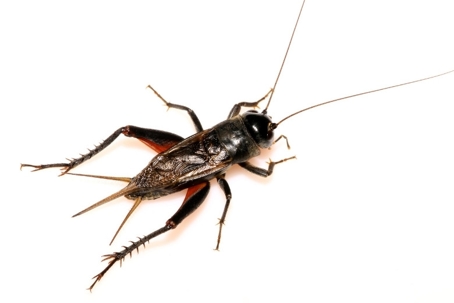Can Crickets Bite?
Yes, crickets can bite people, but it’s very uncommon and usually not harmful. Crickets have strong mandibles (jaws) for chewing plant material, but they are not designed to feed on humans. A bite might occur if a cricket feels threatened or is handled roughly.
Crickets are not venomous and do not transmit diseases through biting.
The “bite” is more of a pinch, not a true wound.
Most reactions are minimal and don’t require medical treatment, though cleaning the area with soap and water is always good practice.
Do Crickets Bite?
Crickets are very unlikely to bite, but when they do, it usually happens under circumstances where they feel threatened or stressed:
Direct handling: Picking up a cricket with bare hands can provoke a defensive reaction. If it feels trapped, it might pinch with its mandibles.
Cornered or trapped: A cricket pressed against a wall, in a container, or caught in clothing may bite defensively.
Protecting themselves: Crickets may attempt to bite if they are trying to escape a predator, including humans, though this is extremely rare.
Aggression between crickets: While rare, some crickets can bite each other when competing for territory or mates, and accidental bites to humans can occur if fingers are in the mix.
Even in these scenarios, cricket bites are minor. They don’t inject venom and rarely break the skin in a way that causes anything beyond mild irritation.
Cricket Bites
Cricket bites are rare and typically not dangerous, but they can cause minor issues in certain situations. Most crickets lack the jaw strength to break human skin, and even when they do bite, the effects are usually mild. However, there are some potential risks to be aware of:
- Minor skin irritation or pain: A cricket bite may result in a small red mark, mild swelling, or a pinching sensation at the site. The area might feel slightly sore or itchy for a short time.
- Allergic reactions: Though uncommon, some people may experience a mild allergic response to a cricket bite or to contact with cricket saliva, feces, or shed body parts. Symptoms can include redness, itching, or localized swelling.
- Secondary infections: If the bite breaks the skin and isn’t cleaned properly, bacteria can enter the wound and cause infection. Signs include increased redness, swelling, warmth, pain, or pus at the site.
- Disease concerns (minimal): Crickets are not known to transmit diseases directly through bites. However, they can carry pathogens such as E. coli and Salmonella on their bodies or in their droppings, which can contaminate food or surfaces in heavily infested areas.
- Psychological discomfort: For some individuals, especially those with entomophobia (fear of insects), the idea or experience of being bitten can cause anxiety or distress even without physical harm.
In most cases, cricket bites require little to no treatment—simply wash the area with soap and water, apply an antiseptic, and use a cold compress if there’s swelling. If signs of infection or an allergic reaction develop, medical attention is advisable.
What Do Cricket Bites Look Like?
Cricket bites are rare and usually very mild, so the signs can be subtle. Here’s what they typically look like:
Small puncture mark or tiny red spot: Usually only one or two marks, depending on the bite.
Mild redness or irritation: Slight inflammation around the bite area may appear.
Minimal swelling: Any swelling is usually minor and short-lived.
Itching or slight discomfort: Some people may feel a mild stinging or tingling sensation, but it’s usually brief.
Cricket bites do not inject venom, so they don’t cause serious reactions.
They heal quickly, often within a day or two, and generally don’t leave scars.
Because they’re so mild, cricket bites are often mistaken for other insect bites (mosquitoes, fleas, or ants).
What To Do About Cricket Bites
If a cricket bites you, the good news is that it’s usually minor and not dangerous:
Clean the area immediately: Wash the bite with soap and warm water to remove any dirt or bacteria. Pat dry with a clean towel.
Apply a mild antiseptic: Use an over-the-counter antiseptic or antibiotic ointment to prevent infection.
Reduce irritation: If there’s redness, swelling, or itching, apply a cold compress for 5–10 minutes. Over-the-counter anti-itch creams (like hydrocortisone) or oral antihistamines can help if irritation persists.
Avoid scratching: Scratching can increase the risk of infection and slow healing.
Monitor for unusual reactions: Serious allergic reactions to cricket bites are extremely rare, but if you notice severe swelling, spreading redness, or signs of infection (pus, warmth, increasing pain), seek medical attention.
Prevent future bites: Avoid handling crickets directly. Keep living areas clean and reduce areas where crickets might hide. Contact us to learn how our professional pest control services can help with crickets.
Cricket bites are almost always minor and self-limiting, so in most cases, basic first aid is all that’s needed, aside from getting rid of the crickets themselves.

